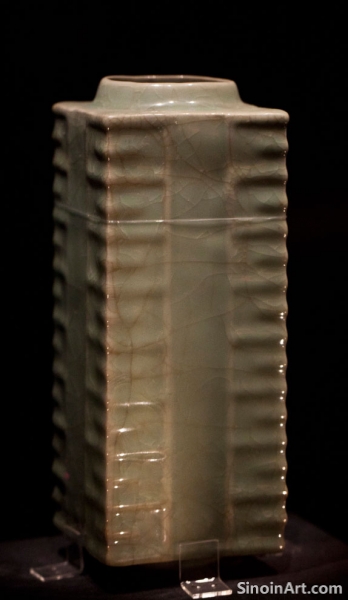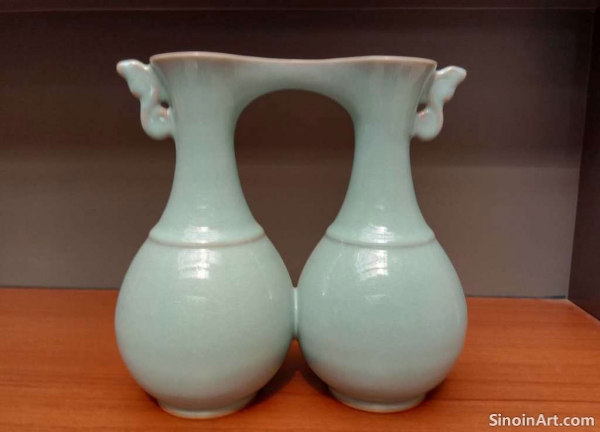Guan Ware: The Mystery of Imperial Ceramics
|
Guan ware is a rare and mysterious ceramic style produced for the imperial court during the Southern Song Dynasty. These pieces are characterized by their thick, crackled glazes, often in shades of gray, blue, or green, and their understated forms. Guan ware was some of the most highly prized ceramics of its time.  The kilns that produced Guan ware have not been definitively identified, adding to the mystique surrounding these pieces. This mystery has further added to the intrigue surrounding these imperial wares. Scholars have worked hard to try to ascertain the exact source of these magnificent pieces.  Guan ware is often characterized by its deliberately crackled glaze, known as “crazing.” This effect was achieved by carefully controlling the cooling process during firing. The crackle is part of the intended design aesthetic and showcases the potter’s technical skills.  The forms of Guan ware were often simple, elegant, and understated, reflecting the aesthetic tastes of the imperial court. These pieces were made for the elite and represent the highest standards of ceramics craftsmanship. The forms allow the viewer to focus on the glaze and the subtle details of the construction. The enduring appeal of Guan ware lies in its rarity, its exquisite craftsmanship, and the sense of mystery that surrounds its production. Guan ware is highly valued for its subtlety and its refined craftsmanship. These ceramics are some of the most sought after from the Song Dynasty. |
Tag : Guan ware, Song Dynasty, Imperial ceramics, Crackled glaze, Chinese pottery
Related information
- Jun Ware: The Art of Transmutation
- Song Ceramics and the Representation of Nature
- The Delicate Beauty of Ru Ware Porcelain
- The Beauty of Celadon: Longquan and Beyond
- The Everyday Elegance of Song Dynasty Ceramics
Jun ware, a distinctive Song Dynasty ceramic style, is known for its thick, opalescent glazes in a range of colors, achieved through carefully controlled firing processes, often exhibiting dramatic and unpredictable visual effects.
The forms, glazes, and decorative motifs of Song Dynasty ceramics often reflect a deep appreciation for nature, with potters drawing inspiration from the natural world. The incorporation of natural elements is a clear indicator of the importance of nature in Tang artistic thought.
Ru ware, produced for a short period during the late Northern Song Dynasty, is among the rarest and most highly valued of all Chinese ceramics. Known for their delicate bluish-green celadon glaze, often described as the color of "sky after rain," Ru ware pieces are celebrated for their understated elegance, simple forms, and subtle crackle patterns. They are highly sought after by collectors and admired for their timeless beauty.
Celadon, a jade-like green glazed ceramic, is a hallmark of Song Dynasty pottery, especially Longquan celadon, known for its pure color, smooth texture, and elegant forms, and also includes distinctive styles like that of Yaozhou.
While Song ceramics are often celebrated for their rare and exquisite pieces made for the imperial court, a wealth of utilitarian wares were also produced for everyday use. These pieces, while perhaps less elaborate than court ceramics, exhibit a refined sense of beauty and practicality, demonstrating the ubiquitous presence of ceramics in Song Dynasty life. These pieces are an important window into everyday life during this period.